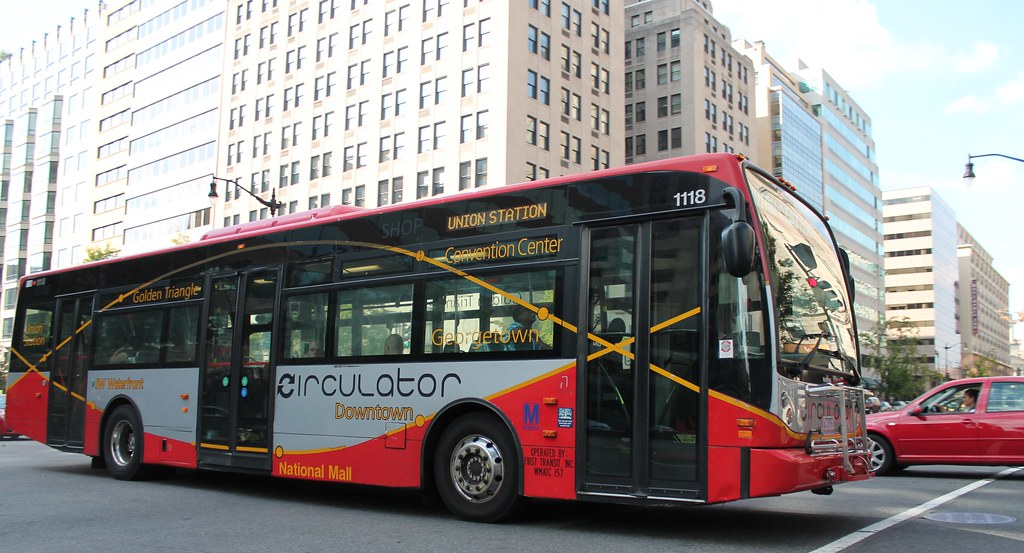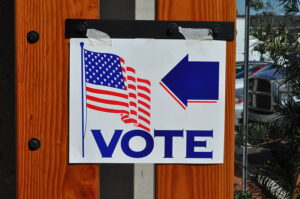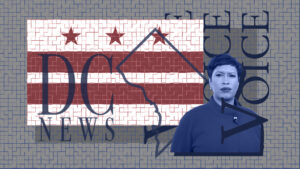Since Feb. 1, D.C.’s bright red and yellow Circulator buses have been free to ride. A sack is slung over the fare box bearing the slogan “Fair Shot”—the name of Mayor Muriel Bowser’s initiative to boost access to public transport. On the Georgetown Circulator, you can get from the Safeway on Wisconsin Ave. to Union Station, and back, for no cost.
A free Circulator has been a significant step forward for accessibility in the city, but the D.C. Council has slashed the program’s funding from the District’s budget, meaning that when a new fiscal year begins on Oct. 1, fares will rise back to $1 per ride. This editorial board believes that the city must keep the Circulator free and that reintroducing fares would deepen inequality in D.C.’s transit system.
The simple logic behind Bowser’s initiative is that everyone has the right to transportation, no matter their income. Rolling back the program would further cut off D.C.’s most vulnerable populations from public transit, which, in our city, is already alarmingly inequitable.
For District residents who can easily foot a $1 fare, free bus service means very little. For those who can’t, it can be a lifeline. “A lot of people applying to jobs in downtown D.C. rely on the Circulator to get there,” Colly Dennis wrote in a June piece in Street Sense, D.C.’s street newspaper serving and advocating for the city’s homeless residents. Dennis urged the Council to keep the buses free.
A free Circulator has made an impact here in Georgetown, too. Our neighborhood lacks a Metro stop, and bus service is spotty. Many staff members and students struggle to afford the commute to and from campus, and the Circulator has helped to alleviate this problem.
Bowser, who promised in March to keep the buses free “indefinitely,” has taken to social media to protest the Council’s decision in recent weeks, sharing touching videos and messages from D.C. residents saying that the free Circulator has helped them get to work, to school, or to homeless shelters.
Her fight has ignited a profound conversation in the District on public transit, and what an accessible Washington could look like. At least 37 other U.S. cities have removed fares from some part of their public transit, including Baltimore, Boston, and Pittsburgh. Why not D.C.?
The Council’s answer, vaguely, was that there wasn’t enough evidence the program was helping city residents. Yet Circulator ridership rose by 20 percent this March, from 2018.
The cost to keep it free? $3.1 million—pocket change for a city with a $15.5 billion annual budget.
Critics of the initiative have dismissed it as a flimsy publicity stunt that distracts from real reform. Free things, after all, have easy, calculable public appeal. They’re a shortcut to political capital. In a way, Bowser’s free bus rides are the public transit equivalent of your freshman chaplain handing out free muffins. It may feel good in the moment, but long-term issues linger. Her opponents have seized on this framework to scorn the initiative: “D.C. is in urgent need of *quality* public transit, not free public transit,” one disparaging tweet reads.
Others argue that the Circulator does little to benefit D.C.’s most isolated and vulnerable populations, winding through the affluent government and business districts of the city while largely neglecting Wards 7 and 8 (whose median incomes are less than half of Wards 1 and 2). It’s “inequitable,” one critic wrote on Twitter. “Why are we asking D.C. residents to subsidize a tourist’s visit to our city,” another asked.
It is certainly true that the Circulator has a thorny history. The bus system was initially conceived by the city in 1997 as a route to serve visitors traveling downtown. And labor and safety issues have plagued the bus line since its launch in July 2005, as the Amalgamated Transit Union outlined in a 2017 report.
The report says politicians were largely unconcerned by the problems, which included alarming numbers of bus defects. “The decision to run the Circulator in areas with a wealthier, whiter population created a politically influential constituency for the service,” the report says. While we acknowledge that these politics are still at play, most of the Circulator’s riders, it turns out, are not tourists—nor are they particularly wealthy.
A Mineta National Transit Research Consortium survey of Circulator ridership from 2005 to 2012 found that 80 percent of Circulator riders lived in D.C., without much change during peak tourist months. More than a third of riders made less than $20,000 annually, a proportion that’s likely to have risen since fares were removed. Figures on race are more difficult to pin down—they vary wildly from year to year and season to season—but few surveys show a majority white ridership. Clearly, the Circulator does serve D.C. residents, and more importantly, those residents who need low-cost transportation.
We must advocate for affordable, quality transportation that reaches all parts of the city. This editorial board believes that a free Circulator is one key step in making our discriminatory transportation system more equitable. Let’s keep it that way.





